Mary of Scotland

Brief Synopsis
Cast & Crew
John Ford
Katharine Hepburn
Fredric March
Florence Eldridge
Douglas Walton
John Carradine
Film Details
Technical Specs

Synopsis
In 1561, Mary Stuart, the young widow of Francis II of France, sets sail for her native Scotland to re-establish herself as monarch. In spite of attempts by her politically insecure cousin, Queen Elizabeth of England, to prevent her from reaching Scotland, Mary lands safely with her Italian secretary, David Rizzio, and rides to Holyrod Castle near Edinburgh. Immediately upon her arrival, Mary is confronted by her half brother, James Stewart, the Earl of Moray, who is the leader of the country's ruling noblemen, and is questioned about her devotion to Catholicism and her refusal to marry. While the noblemen select a council for Mary, the queen is denounced publicly as a "wicked" Catholic by John Knox, an outspoken Protestant leader. Knox's accusations are countered by the equally eloquent Earl of Bothwell, who in spite of his own Protestantism, pledges his loyalty to Mary and demands that he be named Scotland's military chief. Enraged by Mary's success at charming her court, Elizabeth plots with Throckmorton, the new Scottish ambassador, to use Moray against her. At the same time, Rizzio encourages Mary to wed Lord Darnley, a Catholic who is the heir to the English crown after Elizabeth. Although she loves Bothwell, Mary rejects his proposal and marries the foppish Darnley. Soon after, Mary's council tries to force her to dismiss Rizzio and, when she refuses, goads the sexually frustrated Darnley into accusing the Italian of adultery. In Mary's bedroom, a group of Scottish lords murder Rizzio and, as a drunken Darnley watches, force the queen to sign a false confession of infidelity. Aided by Bothwell's loyal troops, Mary and Darnley escape and thwart Moray and Elizabeth's conspiracy. A year after Mary gives birth to a boy, James, a still discontented Darnley threatens to disown his son as his legitimate heir. Before he is able to carry out his plan, however, Darnley is burned alive in his private refuge, which is destroyed by planted explosives. As Knox damns Bothwell as Darnley's murderer, the earl "kidnaps" Mary and, in defiance of the council, secretly marries her. Twenty days later, Moray abducts baby James, and the rebel lords attack Holyrod Castle. Outnumbered by Moray's troops, Bothwell finally agrees to leave Scotland if Mary is allowed to remain queen. In spite of his promises, Moray forces Mary to abdicate and, after imprisoning her, makes himself regent. Eventually Mary escapes and, believing Elizabeth to support her cause, flees to England. Elizabeth, however, takes Mary prisoner and, after Bothwell dies a mad man in a Danish jail, puts her on trial for treason. Crushed by the news of Bothwell's death, Mary eagerly accepts her inevitable condemnation and refuses to renounce the Stuart claim to the English throne, even when offered clemency by Elizabeth. Satisfied that she has enjoyed a more rewarding life than the ambitious Elizabeth, Mary faces her exeuction with courage.

Director
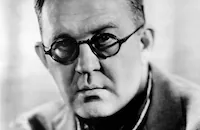
John Ford
Cast

Katharine Hepburn

Fredric March

Florence Eldridge

Douglas Walton

John Carradine

Robert Barrat
Gavin Muir

Ian Keith

Moroni Olsen
William Stack

Ralph Forbes
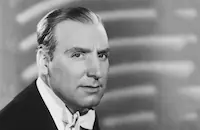
Alan Mowbray

Frieda Inescort
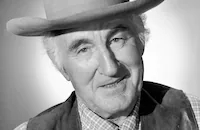
Donald Crisp
David Torrence

Molly Lamont
Anita Colby
Jean Fenwick
Lionel Pape
Alec Craig
Mary Gordon
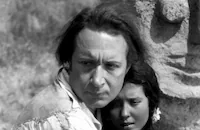
Monte Blue

Leonard Mudie

Brandon Hurst

Wilfred Lucas
D'arcy Corrigan
Frank Baker
Cyril Mclaglen

Doris Lloyd
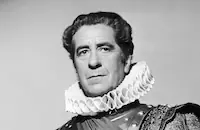
Robert Warwick
Murray Kinnell

Lawrence Grant

Ivan Simpson
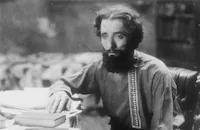
Nigel De Brulier
Barlowe Borland
Walter Byron
Wyndham Standing
Earle Foxe
Paul Mcallister
Lionel Belmore
Gaston Glass
Neil Fitzgerald

E. E. Clive
Alan Bridge
Father Raemers
David Clyde
Colonel Mcconnell
Douglas Gerrard
Niles Welch
Wedgwood Nowell
Winter Hall
Bud Geary

Fred Malatesta
Wingate Smith
Hilda Grenier
Hallam Cooley
Kirchman Twins
Harvey D'roulle Foster
Bob Ryan
John Tyke
Les Sketchley
Harry Tenbrook
Jerry Frank
Frank Anthony
Pat Somerset
Crew
Joseph H. August
Pandro S. Berman
Jack Bond
Carroll Clark
Denzil A. Cutler
Edward Donohue
Patsy Doyle
Idolyn Dupre
Georgia French
Bert Gilroy
Les Goodwins
Jane Loring
Jack Mackenzie
George Marsh
Hugh Mcdowell Jr.
Dudley Nichols
Mortimer Offner
Maurice De Packh
Walter Plunkett
Van Nest Polglase
Louis Shapiro
Nathaniel Shilkret
Darrell Silvera
Charles Stallings
Meta C. Sterne
Vernon Walker
Western Costume Company
Bill Worth

Videos
Movie Clip



Film Details
Technical Specs

Articles
Mary of Scotland
Hepburn, then RKO's leading dramatic star, wanted her friend George Cukor to direct her in the film, but producer Pandro S. Berman, disillusioned by the star-director team after their box-office failure with Sylvia Scarlett (1935), assigned John Ford instead. According to Hepburn biographer Anne Edwards, Hepburn initially "fought, bickered and fussed" with Ford but soon warmed to his salty personality and eventually "fell hard" for him. Edwards writes that on weekends the two "met at Kate?s house and then stole away with elaborate precaution to spend time on Ford's yacht, the Araner." But Ford was already married and, with Hepburn's family voicing disapproval, the romance fizzled once the movie was finished.
Hepburn, who often insisted on doing her own stunts, refused a double for a demanding bit of action in Mary of Scotland that required her run down a flight of stone steps and leap onto the back of a spirited horse, then ride away at breakneck speed. The stunt was complicated by her costume, which included high heels and a voluminous gown weighing 15 pounds. Ford had objected, but Hepburn overrode him, insisting, "Mary of Scotland did it, and I'm a damned good horsewoman." Perhaps to teach his star a lesson, Ford insisted on 11 takes before he was satisfied with the shot. As the unfazed Hepburn strode back to her dressing room, the entire film crew stood and applauded.
Producer: Pandro S. Berman
Director: John Ford
Screenplay: Dudley Nichols, from play by Maxwell Anderson
Art Direction: Carroll Clark, Van Nest Polglase
Cinematography: Joseph H. August
Costume Design: Walter Plunkett
Editing: Jane Loring
Original Music: Nathaniel Shilkret, Max Steiner
Cast: Katharine Hepburn (Mary Stuart), Fredric March (Earl of Bothwell), Florence Eldridge (Elizabeth Tudor), Douglas Walton (Darnley), John Carradine (David Rizzio),
BW-124m. Closed captioning.
by Roger Fristoe

Mary of Scotland
Quotes
I might have known you'd come to gloat like this - stealthily, under cover of night.- Mary Stuart
You were born too close to my throne.- Queen Elizabeth I
I have loved as a woman loves, lost as a woman loses... My son shall sit on the throne! My son shall rule England! Still, still, I win!- Mary Stuart
Trivia
Katharine Hepburn, who played Queen Mary, is actually a distant relative of the Earl Of Bothwell, whose family name was, in fact, Hepburn.
Moroni Olsen repeats his stage role as John Knox in the film.
Both Ginger Rogers and Bette Davis were interested in playing Elizabeth.
Notes
Maxwell Anderson, who wrote Mary of Scotland in blank verse, won a Pulitzer Prize in 1933. His portrait of Mary Stuart, which Helen Hayes performed on Broadway, is somewhat more sympathetic than historians generally allow. According to published biographical accounts, Mary Stuart was the daughter of James V of Scotland and Mary of Guise and, through her grandmother, Margaret Tudor, was heir to the English throne after Henry VIII's children. Brought up in France as a Roman Catholic, Mary married Francis II in 1560, who soon died, then returned to Scotland in 1561. In 1565, she married her cousin, Henry Stewart (Lord Darnley), and began a rigorous campaign to establish herself as absolute ruler and to promote Catholicism in Scotland. As depicted in the film, Mary thwarted an insurrection by her half brother, the Earl of Moray, in which her secretary, David Rizzio, was murdered. Lord Darnley's murder in 1566, however, has been attributed to Mary and to James Hepburn, the Earl of Bothwell, whom Mary then married in May 1567. As shown in the film, this marriage instigated a rebellion among Mary's nobles and led to her abdication twenty days later. After her son was crowned, Mary fled to England and was imprisoned by Elizabeth I. She consented to divorcing Bothwell, who also was imprisoned and died an insane man in 1578. In spite of several Catholic uprisings, Mary remained Elizabeth's prisoner until she was executed in 1587. Modern sources point out that, contrary to the play and the film, Mary and Elizabeth never met. Critics also note that the movie neglects the passage of time at the end of Mary's story, making her appear still youthful at the time of her execution.
Prior to making Mary of Scotland, John Ford and Dudley Nichols had collaborated on the award-winning 1935 film The Informer (see entry above). (Reviewers noted that as Mary of Scotland was being shot in March, Ford and Nichols were collecting their Academy Awards for The Informer.) According to a pre-production article in New York Times, Tallulah Bankhead and Bette Davis were considered seriously for the role of Elizabeth. Bankhead was reported to be Ford's choice, but Florence Eldridge, who was married to Fredric March, won the part. (Davis went on to play Elizabeth in the 1939 film The Private Lives of Elizabeth and Essex and the 1955 film The Virgin Queen.) A New York Times news item states that March conceded to Katharine Hepburn's contractual demand for top billing because he particularly wanted to play the part of Bothwell. According to studio production files, March was paid $125,000 for his performance, while Hepburn received $50,000. Hollywood Reporter production charts add Halliwell Hobbes, Jean DeBriac, John Blood, Bobs and Billy Watson, Tommy Bupp, and Maxine Jennings to the cast, but their participation in the final film has not been confirmed.
In a Motion Picture Herald pre-production article, RKO executive Ned Depinet is quoted as saying about the film: "Sex has definitely lost its place in the movies. The public doesn't give a hang about sex any more if we feed it good, clean wholesome pictures with a plot." The Motion Picture Herald writer responded to Depinet's remarks with his own observations: "If Mary, Queen of Scots didn't have sex, and lots of it, we have been grossly deceived. And doesn't Mr. Depinet know about Elizabeth, the virgin queen? Virgins just have to have sex. They can not do or be without it. No sex, no virgin." In October 1936, the film was awarded a special medal for "particular merit" by the Fourth International Exhibition of Cinematographic Art in Venice, Italy.
Modern sources add the following information about the film: Hepburn wanted George Cukor as director, but after the failure of Cukor's previous Hepburn vehicle, Sylvia Scarlett , producer Pandro S. Berman refused to team them again. In addition to Bankhead and Davis, Ginger Rogers also campaigned for the role of Elizabeth. In the film, the Earl of Bothwell's family name, James Hepburn, was not mentioned because Katharine Hepburn is a direct descendent of the nobleman. Hepburn performed her own stunts, which included vaulting on the back of a horse, in the production. Modern sources complain that, after Ford left the production, RKO re-edited the film. After Swing Time, Mary of Scotland was RKO's most expensive production of 1936. Additional modern source credits include: Robert Parrish (Assistant editor); Mel Berns (Make-up artist); and Louise Sloan (Miss Hepburn's hairdresser). Modern sources list twins Jean and Judith Kircher, not Kirchman as listed in studio production files, with the role of "Prince James." It is not known which spelling is correct. In addition, modern sources complete Walter Byron's character name as "Sir Francis Walsingham" and list Gaston Glass's character as "Chatelard."
Other films about Mary Stuart include a 1923 British silent called The Loves of Mary, Queen of Socts, directed by Denison Clift and starring Fay Compton; and a 1971 British Universal production, Mary, Queen of Scots, which was directed by Charles Jarrott and starred Vanessa Redgrave and Glenda Jackson.

Miscellaneous Notes
Released in United States 1936
Released in United States on Video April 5, 1989
Released in United States 1936
Released in United States on Video April 5, 1989













